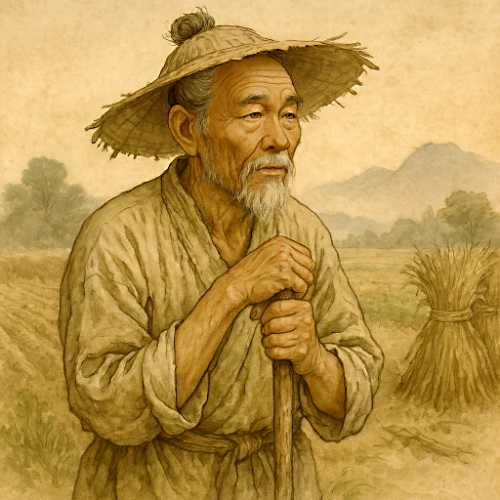Understanding Diabetes
A Western Medical View
Diabetes is one of the most common chronic illnesses in the Western world, affecting more than 38 million Americans. The condition occurs when the body cannot produce enough insulin or cannot use it effectively, leading to elevated blood glucose levels. If left uncontrolled, diabetes can cause serious complications affecting the heart, eyes, kidneys, nerves, and circulation.
Most people have type 2 diabetes, which often develops gradually and is linked to factors such as diet, weight, inactivity, and genetics. Type 1 diabetes, which is less common, is an autoimmune condition that typically begins earlier in life and requires lifelong insulin therapy. A third type, gestational diabetes, can appear during pregnancy and usually resolves after childbirth—but may increase future risk.
How Western Medicine Diagnoses and Treats It
In Western care, diabetes is diagnosed using blood tests: fasting glucose, hemoglobin A1C (a three-month average), or an oral glucose tolerance test. Once diagnosed, treatment focuses on keeping blood sugar within a safe range, ideally avoiding both high and low extremes.
Western Medicine and TCM Can Complement Each Other
Managing diabetes is not just about blood sugar—it’s about the whole person. Here’s how Western medicine and Traditional Chinese Medicine (TCM) can work side by side to support long-term health.
🩺 Western Medicine Provides:
- Accurate diagnosis and blood glucose tracking
- Medications that control blood sugar and prevent complications
- Guidelines for diet, exercise, and weight management
- Emergency care for dangerous spikes or drops in blood sugar
🌿 TCM Offers:
- Acupuncture to regulate digestion, reduce stress, and support energy
- Herbal formulas tailored to the individual’s pattern (not just their glucose reading)
- Dietary advice focused on warming, nourishing, and stabilizing foods
- Practices like Qigong that calm the mind and improve circulation
Why use both?
TCM helps address fatigue, emotional strain, digestive issues, and stress patterns that may not show up on lab tests—but affect everyday life with diabetes. Meanwhile, Western tools help monitor and reduce physical risks.
The result? A more complete picture of care—where body, mind, and numbers are all part of the plan.
For Type 2 Diabetes, the typical treatment plan includes:
- Medication:
- Metformin is often the first medication prescribed to reduce liver glucose production and improve insulin sensitivity.
- Other medications, such as SGLT2 inhibitors or GLP-1 receptor agonists, may be added to help regulate blood sugar, support weight loss, or protect the heart and kidneys.
- Lifestyle Changes:
- Diet, exercise, and weight management are essential. Patients are often advised to reduce carbohydrates, avoid processed sugars, and increase physical activity.
- Monitoring:
- Regular blood sugar checks help patients and doctors track how well the treatment is working. The A1C test is typically used every 3–6 months.
For Type 1 Diabetes, insulin injections or an insulin pump are necessary for survival. Care also includes continuous glucose monitoring and careful meal planning.
Western treatment is structured, data-driven, and primarily focused on blood sugar control and complication prevention.
Where TCM Takes a Different View
Traditional Chinese Medicine approaches diabetes with a different lens. Rather than viewing it strictly as a glucose issue, TCM sees it as an internal imbalance, often involving dryness, heat, or deficiency of Yin and fluids. Historically called Xiaoke (wasting and thirsting disorder), diabetes in TCM is treated based on the unique presentation of the patient—not just the lab numbers.
A person with thirst, irritability, and dry mouth might be seen as having lung heat. Another with fatigue, slow digestion, and heaviness may be diagnosed with Spleen Qi Deficiency and internal Dampness. A third may be treated for Kidney Yin Deficiency, especially if symptoms involve night sweats, insomnia, or chronic exhaustion.
TCM therapies may include:
- Acupuncture: Used to regulate digestion, support the kidneys and pancreas, reduce stress, and improve energy flow.
- Herbal Formulas: Carefully selected and adjusted over time to address specific imbalances.
- Dietary Therapy: Based on warming, nourishing, and stabilizing foods appropriate to the individual’s constitution.
- Qigong or Tai Chi: Slow, mindful movement practices that support circulation and stress regulation.
Complementary, Not Competitive
While TCM and Western medicine use different models, they can work together. Western care provides immediate tools to manage blood sugar and prevent complications. TCM offers a long-term approach that addresses patterns affecting digestion, energy, stress, and resilience.
Patients who integrate both systems often find they feel better—not just because their numbers improve, but because their daily experience of health deepens. Sleep, mood, digestion, and vitality all become part of the care equation.
It’s important to coordinate care across systems, especially when using herbs or making dietary changes. But when done safely, combining the structured protocols of Western medicine with the whole-body view of TCM offers a broader, more sustainable path forward.



